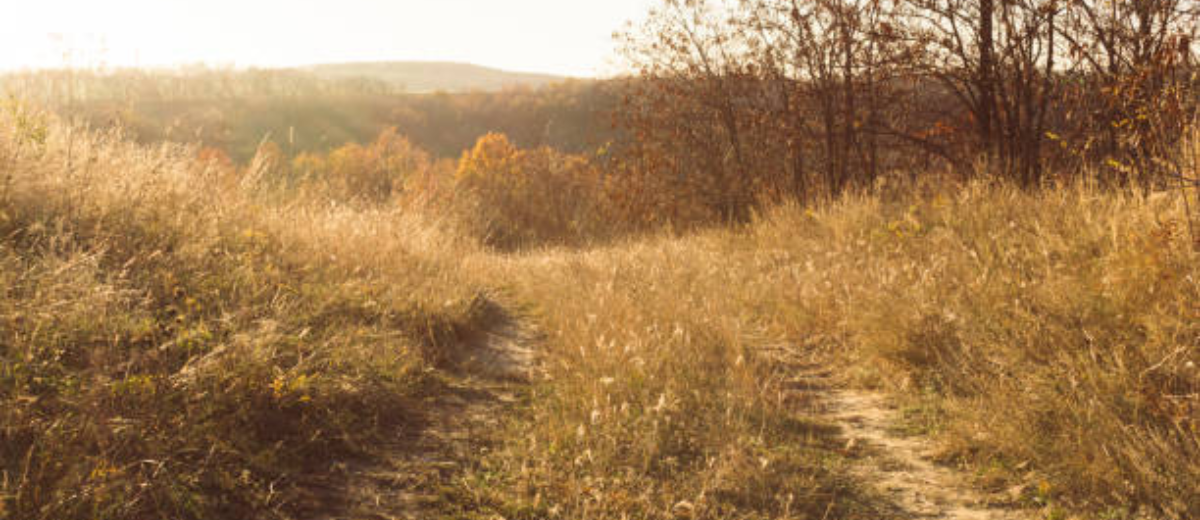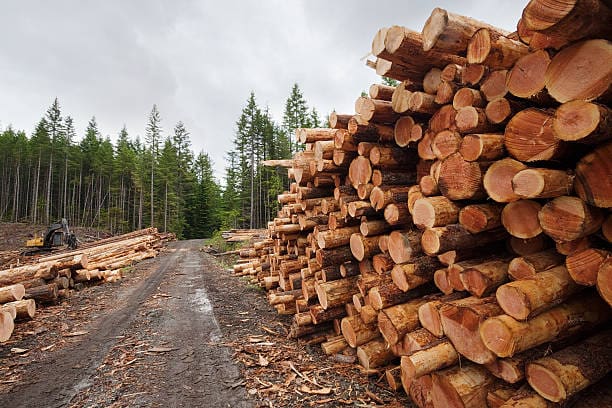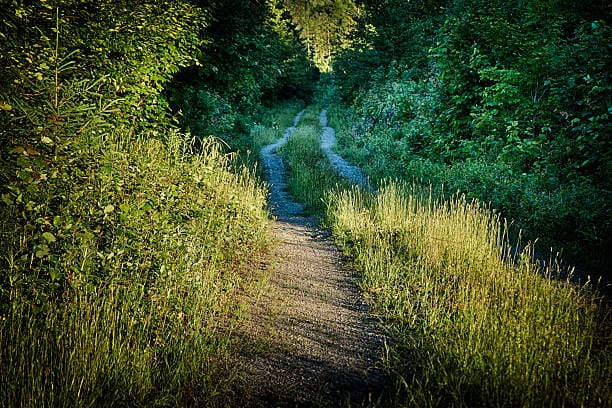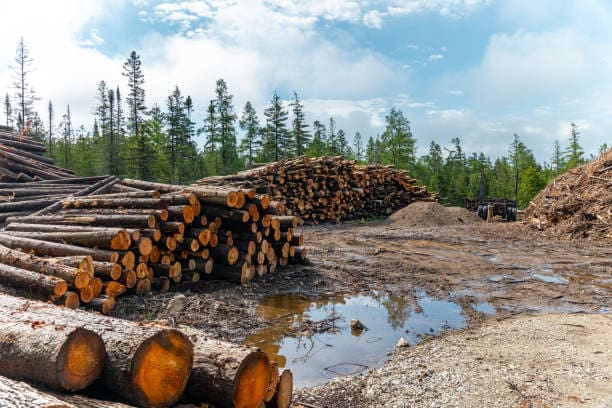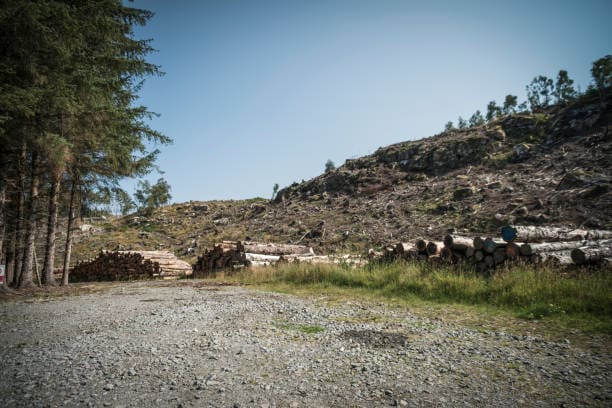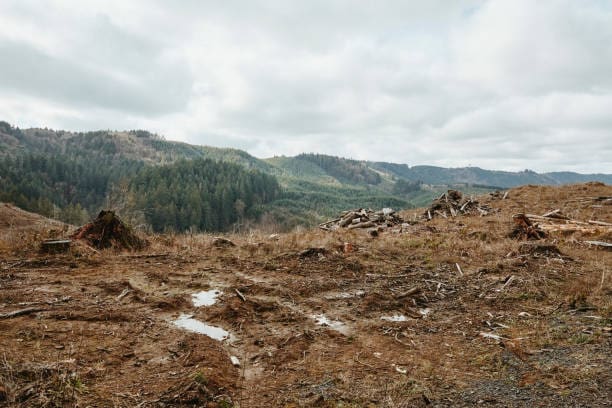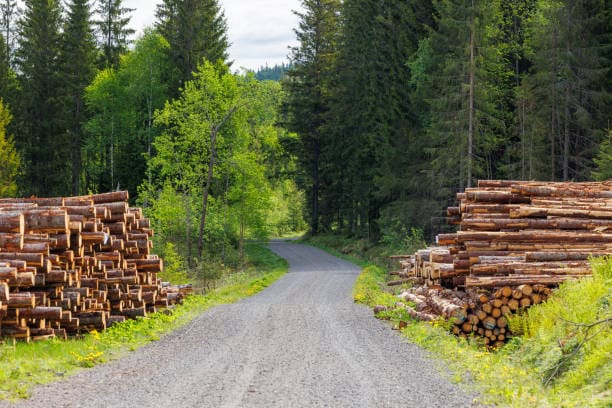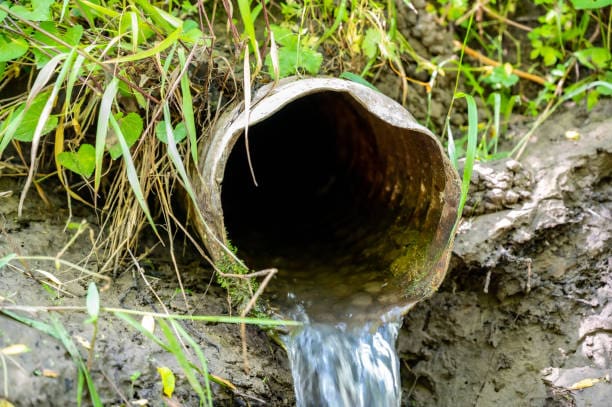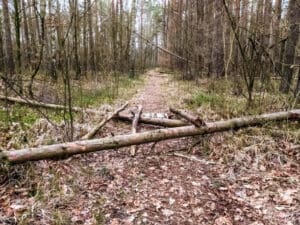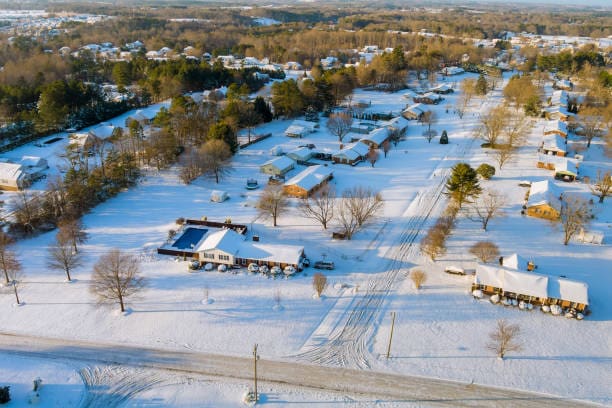Right of Way and Easement – What’s the Difference?
The terms easement and right of way are similar and often interchanged.
“Easement” is the right and privilege to cross or otherwise use someone else’s land for a specified expressed purpose. Examples might be a utility easement for power, a water line or sewer line easement, a view easement for a scenic overlook, or an easement for a walking path to the pond or ocean.
An easement could also be the voluntary surrender of property rights (a negative easement). An example would be a conservation easement where the property owner agrees not to construct anything on a parcel of land or use the land for a specific purpose like timber harvesting or farming in exchange for monetary consideration or tax benefits.
“Right of way” is the legal right, established by usage or grant, to pass along a specific route crossing someone else’s land. An example would be granting a right of way for a road to another property or granting the utility company a right of way over your property to put up wires and poles to deliver services to your home or neighboring homes.
Dominant Estate is the property benefitting from a right of way or easement. A Servient Estate is the property burdened by the easement or right of way granted. You may hear these terms from time to time.
Often when you have conveyed a parcel of land, along with the property, comes other rights and privileges benefitting or burdening the parcel. Understanding the scope of these rights and privileges is often tricky. Disputes often arise when someone exercises their rights to an easement or right of way that has been dormant or never used. For instance, a woodlot owner who has the right of way for an access road to their parcel of land that has no road frontage or other access. Woodlots may lay dormant for decades while the wood mass matures to a marketable product. The woodlot owner gets ready for a harvest and suddenly shows up to clear and rebuild a road that hasn’t been used for 50 years. The land owner returns home from work or vacation and discovers the equipment and road.
There is a good chance the landowner has long forgotten there was a right of way burdening their property or never knew at all. Reactions can range from a shrug to violence. Of course, this could have been managed by the woodlot owner notifying the landowner of the pending activity, but generally, there is no legal requirement of notification or asking permission to use an easement or right of way already granted.
How Rights of Way can be Acquired
In the situation of the woodlot owner using their deeded right of way, there are limitations unless otherwise written into the grant of the right of way. The trees within the right of way actually belong to the landowner. Ironically the woodlot owner would have to cut down the trees that are in the right of way and give the wood to the landowner or agree with the landowner to pay the landowner for the value of the wood.
The woodlot owner generally has the right to ditch along the side of the road, install culverts and place gravel. However, the woodlot owner cannot pave the road surface. Courts have consistently ruled that paving is not allowed unless specifically allowed by the grant. The woodlot owner undeniably has the right of free and unobstructed passage over the right of way and make the road surface passable but generally does not have the right to lay pavement or put utility poles on someone else’s land unless provisions are expressly made in the wording of the right of way.
In the above example, the woodlot owner had a deeded right of way. However, let’s say there was a road built to the woodlot over the land of others that was openly and visually used with the landowner’s knowledge but without protest from time to time by the woodlot owner. However, there was no right of way memorialized in a deed. This can be very common in Maine.
Prescriptive Rights or Acquiescence
Over the course of 40 years of open, uninterrupted, and notorious use, rights can be acquired by what is known as prescriptive rights or acquiescence. Rights of way can be acquired under this principle. The courts would generally say the right of way acquired by this example would be limited to ingress and egress to harvest wood. It would generally not give the woodlot owner the right to build a road for development as that was not the historical use of the road.
Rights of way can also be asserted or lost by what is known as adverse possession. Maine Revised Statues, Title 14 subsections 812 and 813 address adverse possession and adverse obstruction of rights of way. Rights can be acquired (or lost) by hostile, adverse use of a way continuously for 20 years. The inverse can also be true where a landowner adversely and continuously blocks a deeded right of way continuously for 20 years. The courts have been filled over the years dealing with such matters.
There is one caveat to the above examples. One cannot acquire rights against the government by prescription, acquiescence, or adverse possession.
Rights of Way and Subdivisions
Many people live in a neighborhood created by a mechanism known as a subdivision. A subdivision is a planned community and, since September of 1971, has been required to be reviewed and approved by the municipal planning board. A subdivision can be a few lots to hundreds of lots.
Often the roads and infrastructure supporting the neighborhood are built by the developer and then deeded to the municipality. This would make the roads and utilities municipally owned. The town or city plows and maintains the street, and the general public can pass along the road like any other public street.
If the roads and utilities are not transferred to the municipality (some municipalities do not want the added burden of taking care of more roads than they already have or the developer does not want to build the road to the quality required by the municipality), then the rights and maintenance are sometimes conveyed to a homeowners association who then becomes the legal owner of the road and utilities and assumes responsibilities. Road maintenance responsibilities and ownership become less clear in those developments where no homeowners association is created.
Private Road Ownership
The State of Maine legislature has changed the laws governing what happens to the ownership of private roads over the years. Maine Revised Statues Title 33 Subsection 469-A, a law adopted in 2011, attempted yet again to clarify what happens to unaccepted subdivision roads. You have to know when the road was created and look at the laws in effect at the time or laws subsequently passed by the legislature that might have changed the disposition of a private road. Your attorney must research the subdivision and the law to advise you on private road ownership.
As you can imagine, living within a development, or a subdivision, can bring some serious issues to the forefront. If purchasing a parcel within a subdivision or any land accessed by a private (many times a dirt road) road, you would be wise to consult with your attorney and come to a complete understanding of your rights and the rights of others to use the road and whom is responsible for maintaining the road.
Exclusive vs. Non-Exclusive Rights
Rights of way and easements can be exclusive or non-exclusive. Non-exclusive rights is defined as shared rights with others. Exclusive rights are granted by a servant estate. An apartment is an example of an exclusive grant. A landlord grants a tenant exclusive rights to a particular unit. While it does not happen often, an exclusive right of way to a particular parcel (dominant estate) of land could be granted, meaning the underlying landowner could not use or benefit from the right of way or the road built within the exclusive right of way.
Another common example of an exclusive easement is the exclusive rights to a (usually small) piece of land for things like water standpipes, sewer pump stations, prefab communications equipment buildings (commonly seen near the sides of a road) or a cellular transmission tower site. A cemetery site could also be an exclusive right to a particular and defined plot of land.
The land owner does not convey the property but grants an exclusive easement to the entity for a fixed amount of years. An exclusive easement grants the easement holder the sole use of the property. The property owner gives up their rights to use the land, usually in exchange for periodic or one-time payments.
Maine Revised Statues, Title 17 subsection 3860 grants access (a de facto right of way) to great ponds in the State of Maine to its citizenry. The passage by a person on foot across unimproved land is protected by this law. Similar colonial law protects the rights of the public to access tidal flats for fishing, fowling, and navigation.
Herrick & Salsbury, Inc. would be glad to discuss any questions you have regarding an easement or a right of way. We work in conjunction with many attorneys with special knowledge of rights of way to help our clients understand their rights or how their land may be burdened by an easement or a right of way. Check out our blog page for more in-depth information on Right of Ways and Easements.
